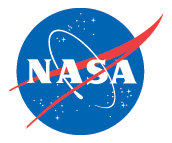


The source is the part of the mass spectrometer where the chemical samples are taken in. If the sample is not already ions, it is converted into ions at this time. The chemical sample for Huygens' GCMS is Titan’s atmospheric gases. It will be continuously sampled throughout Huygens’ mission, which will last somewhere between 2 to 3 hours.
Huygens' GCMS source accepts the chemical sample through leaks, which are channels of tiny holes. Leaks can be comprised of various materials; the leaks in Huygens' GCMS are comprised of glass. Each hole is only a few microns (about 0.0000394 inches) in diameter. Because the holes are so small, they can easily get clogged –even a piece of space dust is big enough to do it! Consequently, Huygens' GCMS has several different holes for one leak.

Leaks control the pressure inside the vacuum by limiting the flow of gases into the instrument. If the pressure gets too high, it interferes with ion analysis. The leaks are designed to prevent this from happening by only letting in certain pressures.
Next: MS Source - Vacuum & Pumps